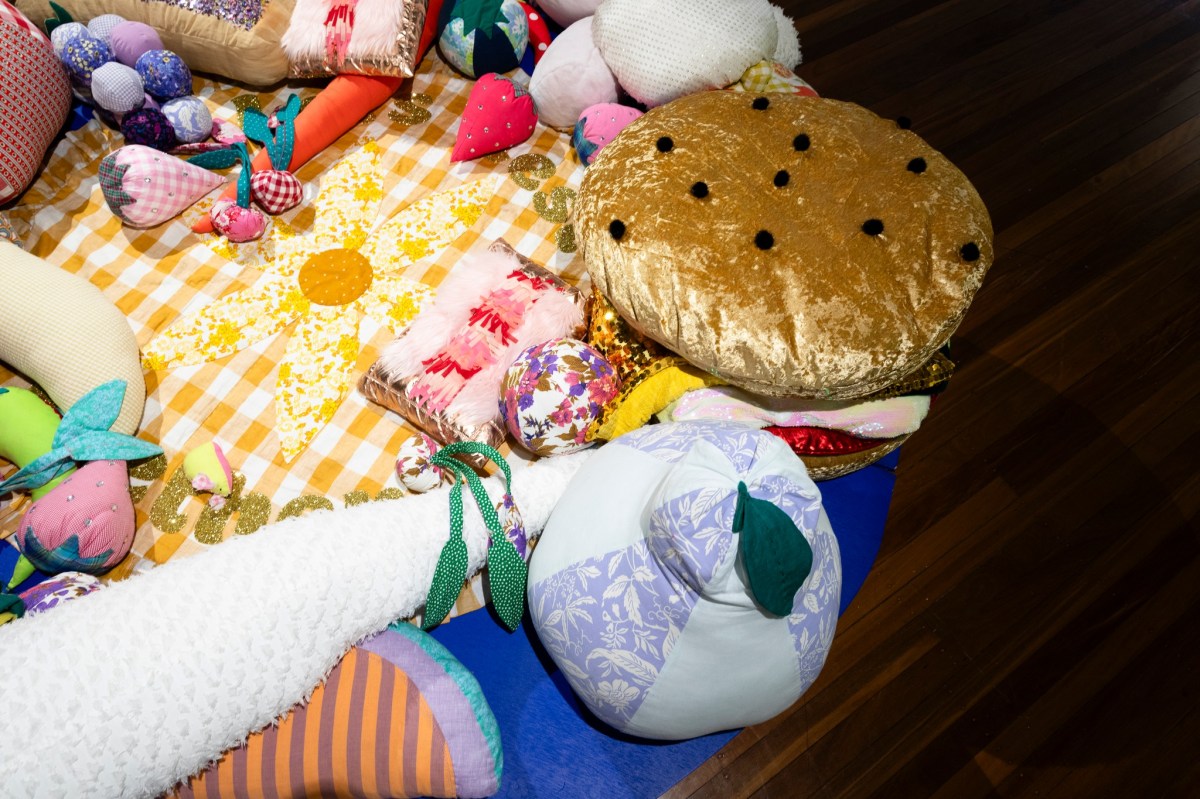Filled with vibrant multiculturalism and youthful creativity, Western Sydney is home to some of the most interesting and talented artists. While Sydney’s CBD has glitzy arts and cultural institutions, Western Sydney should not be ignored when it comes to supporting an enriching arts scene.
Despite being disparaged, Western Sydney is among the most diverse and fastest-growing areas in Australia, housing over 2.65 million people or a tenth of Australia’s population. So, there should not only be more funding, but also more opportunities for local artists to display and produce their works.
Constellations, an exhibition at Leo Kelly Blacktown Arts Centre (Blacktown Arts), showcased how seven local art collectives are helping to fill Western Sydney’s artistic needs across dance, visual, digital, literary and performing arts.
In this article:
Championing homegrown art collectives
An eclectic mix of works displayed proudly in one space, Constellations marks the first time a spectrum of Western Sydney art collectives have been brought together to celebrate collective and community practices.
Each collective fosters a sense of community among its members, having been formed in response to gaps within the arts industry in providing appropriate space for specific identities. These collectives include Arab Theatre Studio, Dance Makers Collectives, The Adorned Collective, The Finishing School, Opnsrc.co, Pari and We Are Studios.
Tian Zhang, the curator of Constellations, tells ArtsHub, ‘Particularly in Western Sydney, there appears to be many artist-run initiatives and collectives that have popped up, and are doing their part to support the arts ecology, artists and local communities.
‘A lot of these collectives and groups have formed out of a particular need, so people have got together, for example, because there was no independent gallery or artist-run space in Parramatta, or no place for artists with disability to come together and create a safe space for themselves’, Zhang explains.
‘It’s important to recognise that this coming together has generated strength, where perhaps before, these places and these lived identities were seen as a point of weakness. Gathering together and seeing that as a strength has been really empowering … they’ve been able to shift and own the narrative around their practices and their lives,’ she continues.
Zhang also explains that there are many incredible artists from Western Sydney who were previously forced to travel into the city to further their careers, including for art school, exhibiting or performing. ‘What these collectives and spaces do is try to develop and support artists locally, so that you don’t have to go into the city to participate in these forms of art and creative practice,’ she says.
Independent collectives and spaces are also particularly important in Western Sydney as they provide an alternative to council-run art spaces. While council-run spaces have access to more resources, they are limited in how they can ‘support what’s happening on the ground and the types of conversations that artists really want to have,’ says Zhang.
‘Having that independence is critical for freedom of speech and artistic expression… Collectives and independent spaces can be responsive, compared to bigger institutions that aren’t as flexible and can’t move as quickly (when something happens)… These small, agile and nimble groups are a really important part of the ecosystem’, Zhang says.
ArtsHub further delves into two art collectives, We Are Studios and Pari, to explore their impact on the Western Sydney arts scene.
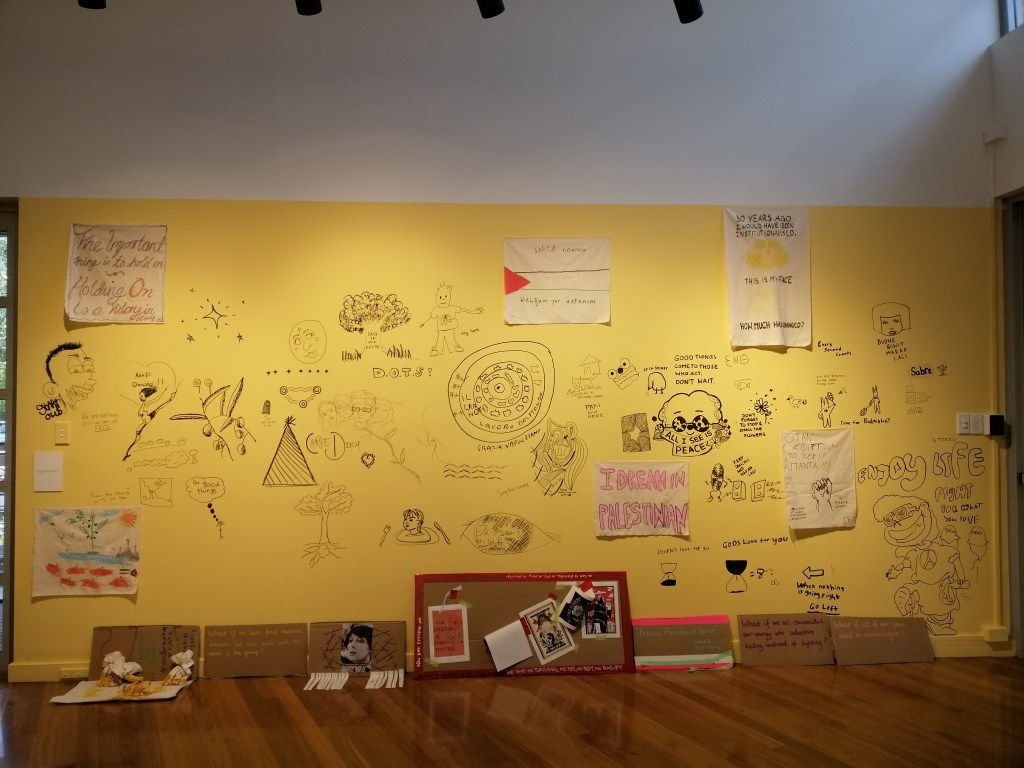
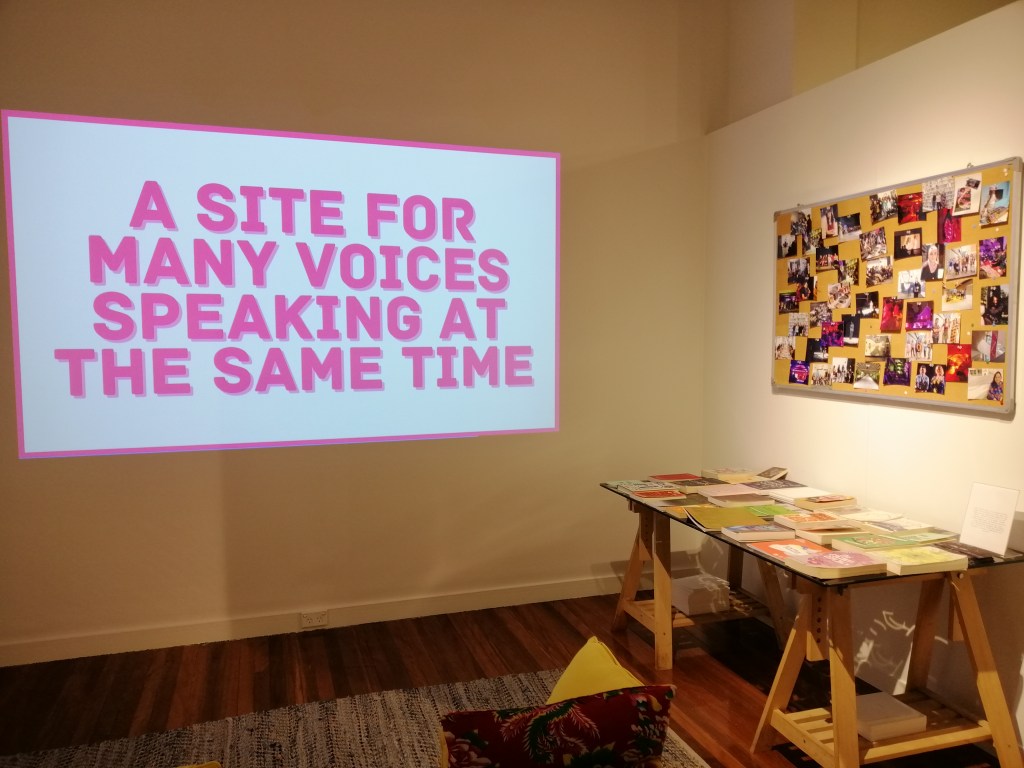
Disability-led, We Are Studio’s debut
A suspended canvas hangs beautifully from the ceiling, hosting a colourful work made in response to the theme ‘WE ARE’. ‘It celebrates and expands on how we define ourselves and the role we embody within our communities,’ the gallery says.
This theme reflects We Are Studio’s important role as a 100% disability-led inclusive studio that supports, mentors and advocates for creatives with disability across Western Sydney.
Jordan Valageorgiou, co-Founder and Chairperson of We Are Studios, says, ‘The impact we want to achieve is to close the gap for Western Sydney creatives with disability, to create the space and environment needed for them to thrive as artists and get their fair share of artistic opportunities that disproportionately go to artists without disability today.’
Valageorgiou continues: ‘We’re not a service provider, and while service providers may have their place, they shouldn’t be seen as the same as artist-run initiatives. We really want to highlight that creatives with disability can run a great organisation, be accessible and sustainable – all on our own.
‘Artists with disability in Western Sydney have multiple intersecting barriers – health, wealth and distance from professional arts networks – not to mention the complexities of other intersectional identities. We want there to be spaces for artists with disability to create, show and sell their work where they live and work.’
Co-Founder and Creative Director, Liam Benson adds: ‘Art collectives are a vital part of Western Sydney’s cultural infrastructure and are resilient peer networks that provide artists with professional opportunities for growth and social connection.’
Read: Take us as we are – empowering neurodivergent and disabled experiences in the arts
Reflecting Western Sydney’s unique diversity, the artists come from a plethora of backgrounds, ranging in age from 18 to 85, and with all forms of disability, including cognitive disability, neurodiversity, mental health challenges and chronic health issues.
‘We use the social model of disability to inform how we work, where barriers are the disability, not the person. We don’t just take NDIS (National Disability Insurance Scheme)-approved disability. We work with the wide group of people with disability that are excluded or marginalised from NDIS supports,’ Valageorgiou explains.
Founded in 2023, We Are Studio’s first year has been ‘an exciting, hectic and unqualified success’, he says, including various workshops at the Art Gallery of NSW (AGNSW) and Blacktown Arts. It also had its debut exhibition at Blacktown Arts, displaying works from a 10-week program that saw artists collaborating on innovative and ambitious artworks.
‘The exhibition was a first major showing in a cultural institution for many of our artists,’ Valageorgiou says. ‘We presented a large range of activations, including artist talks, private and group tours, an online accessible tour and other outreach opportunities in order to connect our We Are Studios artists with Western Sydney communities, professional artists and cultural workers.’
Speaking about the organisation’s future plans, Valageorgiou says, ‘We enter 2024 with our first Elevate program in our new studio space in Blacktown.’ A partnership with AGNSW, it provides professional development and mentorship to support emerging artists with disability.
‘Other projects we are looking forward to include collaborating with the Biennale of Sydney, working towards a major group exhibition at Hawkesbury Regional Gallery, and an exciting group exhibition at Pari.’
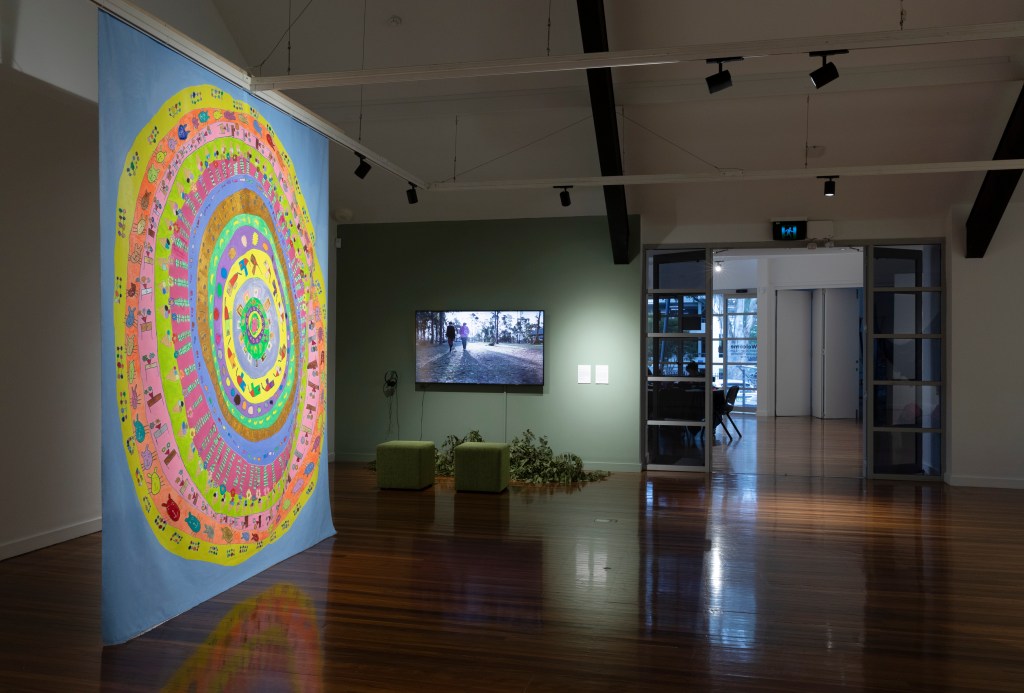
Pari for Parramatta practitioners
Pari is an artist-run gallery and community space based in Parramatta that opened in late 2019, of which Tian Zhang is also a member.
‘We’re currently collectively run by 10 people, without any sort of hierarchy,’ says Zhang. ‘Not only do we show exhibitions and artworks, we also run quite a few workshops, programs and events that are either led by the artists in the exhibitions, or in response to community need.’
She continues, ‘We do sort of pedagogical programs that address particular areas that we feel are gaps in what has been taught in art school, or that people want to learn about in general.’
Such programs include The Ropes, teaching Western Sydney emerging artists things often omitted by arts schools, such as career sustainability, making works based on your values and creating works on Dharug country.
Another program that has run twice is P2P Ngariung, a collaboration with the Indonesian collective Gudskul, encouraged participants to think and learn about collective and community practices across different geographies.
Pari is also invested in responding to local issues, believing that artists play a vital role in processing and reflecting the important issues of our time.
Pari’s dedication in supporting local issues and projects is evident in its role in co-initiating the Dharug and Allies For Nura Alliance (DAFNA), which supports truth-telling led by Dharug community members and is for Dharug leaders to advocate for themselves. With a large Palestinian-Australian community in Western Sydney, an online fundraiser for charities in Gaza was also held following the exhibition, Kin.
Zhang says, ‘We’re open to what our community wants to do, make and talk about. Often, the artworks presented in the space reflect what’s happening locally or further afield, recognising that Parramatta and Western Sydney is home to many different people’.
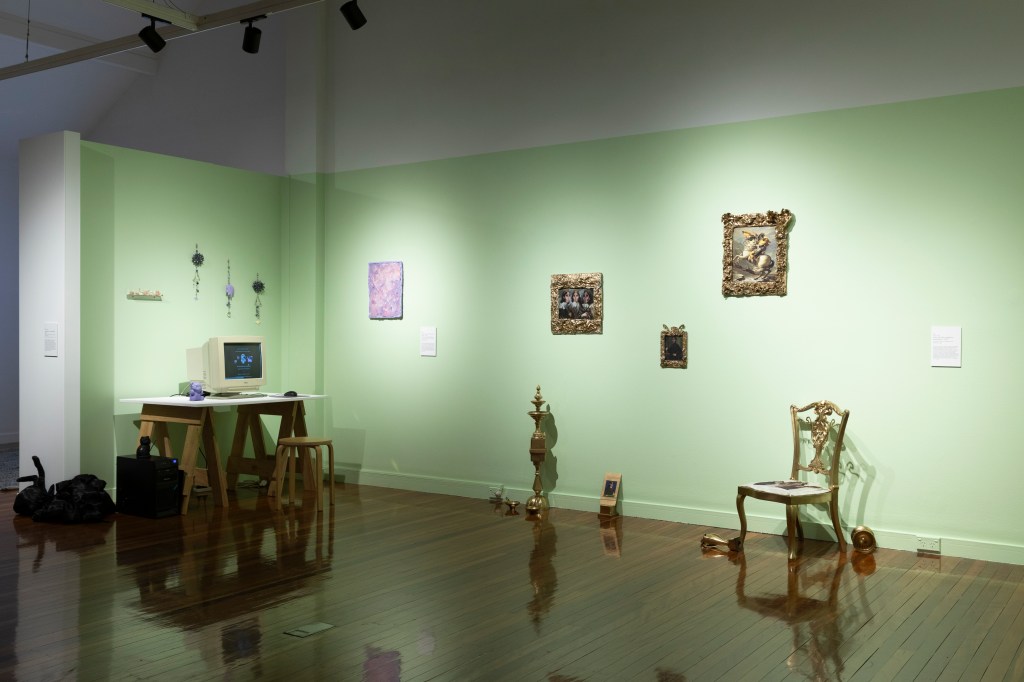
Supporting and sustaining collectives
Summarising Constellations, Zhang says, ‘The works speak to all the different types of art forms that collective practice is… There’s such a variety of how you can be in a collective and what you can do that, really, anyone can take on and think about what’s needed in their own lives and communities.’
As Valageorgiou highlights, however, it is important to recognise the ‘opportunities for funding bodies to invest in (these) innovative programs and organisations… A lot of emerging artists in Western Sydney, who with the right funding and support, could become cultural leaders in their own right,’ he says.
‘The ongoing gaps in cultural funding between what’s provided in East Sydney and Western Sydney are shocking and unacceptable. Western Sydney is an incredibly diverse and dynamic region that produces a lot of great art and culture with limited per capita federal and state funding,’ he continues.
Read: City Council’s art collection revived through Collective Knowledge
So, as the number of art collectives blossoms in Western Sydney, so too do calls to support these diverse groups of artists with important purposes who collectively operate like beautiful constellations.
This article is published under the Amplify Collective, an initiative supported by The Walkley Foundation and made possible through funding from the Meta Australian News Fund.
